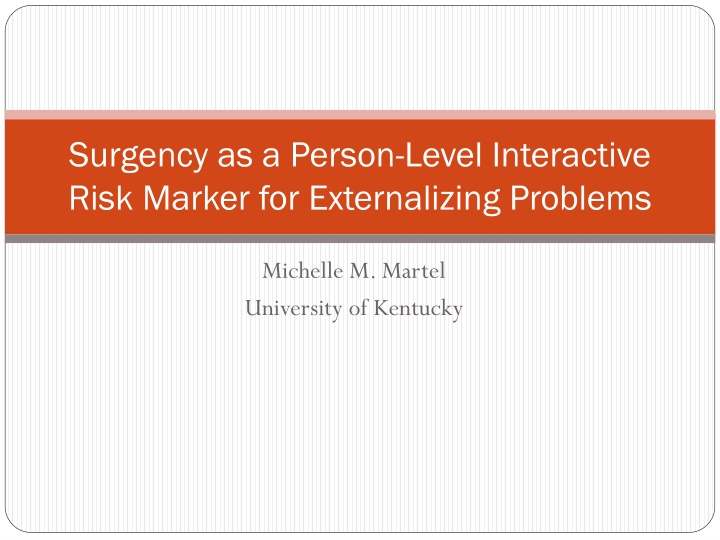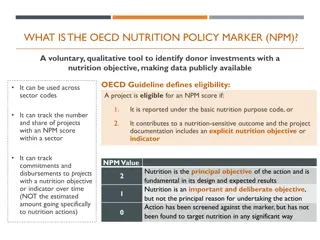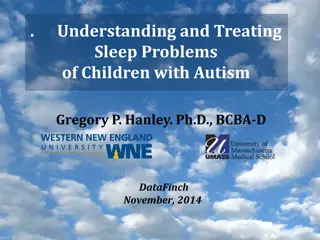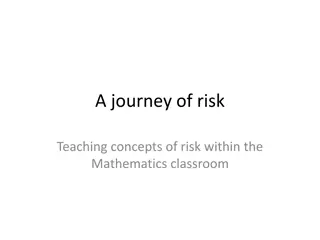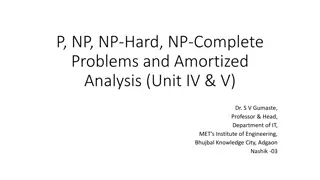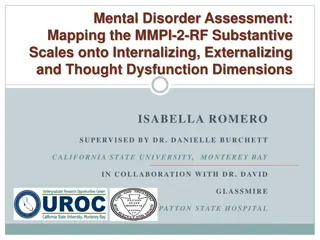Surgency as a Person-Level Risk Marker for Externalizing Problems in Children
Surgency is identified as a key interactive risk marker for externalizing problems in children, including Oppositional-Defiant Disorder (ODD) and Attention-Deficit/Hyperactivity Disorder (ADHD). This study explores how high surgency levels, when combined with low effortful control or low A, may increase the risk of behavioral issues in children, with a focus on ODD, ADHD, and other externalizing problems. The research involves a preschool sample of 109 children and their caregivers, utilizing various diagnostic measures to assess symptoms and traits related to externalizing problems.
Uploaded on Oct 02, 2024 | 8 Views
Download Presentation

Please find below an Image/Link to download the presentation.
The content on the website is provided AS IS for your information and personal use only. It may not be sold, licensed, or shared on other websites without obtaining consent from the author.If you encounter any issues during the download, it is possible that the publisher has removed the file from their server.
You are allowed to download the files provided on this website for personal or commercial use, subject to the condition that they are used lawfully. All files are the property of their respective owners.
The content on the website is provided AS IS for your information and personal use only. It may not be sold, licensed, or shared on other websites without obtaining consent from the author.
E N D
Presentation Transcript
Surgency as a Person-Level Interactive Risk Marker for Externalizing Problems Michelle M. Martel University of Kentucky
Externalizing Problems in Children Continuous dimension Common dimensions include: Oppositional-Defiance Hyperactivity-impulsivity Temper Argues Fidgets On go OD Ext Hyp-I Intrudes Achenbach & Edelbrock, 1987; Krueger et al., 2002; 2007; Martel et al., 2010
Oppositional-Defiant Disorder (ODD) Angry, irritable mood Defiant, headstrong behavior Vindictiveness Marker: High negative emotionality Low A AI DH High Surgency V Burt, 2008; Stringaris & Goodman, 2008; Zastrow et al., in press
Attention-Deficit/Hyperactivity Disorder (ADHD) Inattention Hyperactivity-impulsivity Marker: Low effortful control EC Inatt Surgency Hyper-Imp Martel et al., 2009; Martel & Nigg, 2006
Surgency as a Common Risk Marker for Externalizing Problems in Childhood? Image result for child playing with another child Historically viewed as protective Also risky? Possible mechanisms: Increases risk in the context of other traits? High Surgency X low Effortful Control (or A) Increases risk only in a subgroup of children? Extreme high Surgency subgroup Image result for child playing with another child
Preschool Sample 109 preschoolers, ages 3-6, and their primary caregivers from an urban US community, over-recruited for externalizing problems 64% male 33% ethnic minority ~60% with ODD or ADHD Range of family incomes, educational levels Completed multi-stage, multi-informant screening and diagnostic measures Short-term longitudinal study Families completed telephone interview 6 months and 1 year later
Preschool Measures ADHD and comorbid symptoms Clinician-administered diagnostic interview (K-DBDS) Parent and teacher report on the Disruptive Behavior Rating Scale (DBRS) Child Behavior Checklist / Caregiver-Teacher Report Form Dispositional Traits Parent report on the Child Behavior Questionnaire Negative Emotionality, Surgency, Effortful Control Examiner report on the California Q-Sort Big Five Factors Barkley & Murphy, 2006; Block & Block, 1980; Leblanc et al, 2008; Rothbart, Ahadi, Hershey, & Fisher, 2001
Increasing Risk in Context of Other Traits? Surgency X A: ODD 14 12 10 ODD Symptoms 8 Low A High A 6 4 2 0 Low Surgency High Surgency =.253, p<.05
Surgency X low EC: ADHD 20.00 Hyperactivity- 18.00 impulsivity 16.00 14.00 12.00 10.00 8.00 6.00 4.00 low EC high EC 2.00 0.00 low surgency high surgency =-2.29, p<.05
Subgroup of Children at Risk? 9 8 7 6 Profile 1 5 Profile 2 Profile 3 4 Profile 4 Profile 5 3 2 1 0 NE Sur EC RC N E O A C 109 3-6 year-olds. LL=-1203.41; AIC=2522.82; BIC=2678.38; entropy=.86; Martel, 2016
High Surgency Subgroup Outcomes Profile Low Control Surgency Low Neuroticism High High Agree- ableness High Negative Emotion 17.33(7.06) 14.5(4.51) 10.3(8.58) 9.1(10.73) 24.5(3.54)+ T Inatt T HI T ODD T anx/dep T aggression 17.33(6.41) 11.5(6.83) 2.33(1.53) 11.33(6.66) 17.25(6.34) 12.75(9.86) 3.5(.71) 39(8.49) 9.96(8.32) 5.78(5.8) 2.67(2.64) 7.1(6.33) 3.1(3.33) 5.17(5.81) 6.33(5.47) 25(2.83)** 14(0)** 1.5(2.12) 19(1.41)* 13.08(11.78) T PDD Change in Inatt Change in HI 4(1.73) 2-2.5 14.5(.71) 3.8-5.8 4.75(4.41) 2.73-3.2 5.83(6.31) 3.1-4.1 7(4.24) 4-0 7-7 7.4-7.8 4.07-4.4 4.2-3.9 8-0** Change in ODD 6-3 5.2-5.4 3.33-2.27 3.4-2.8 6-0** Martel, 2016
Discussion Surgency may increase risk for externalizing problems in childhood through multiple mechanisms: High surgency X low EC or A High surgency subgroup May do so differentially based on disorder ADHD: high surgency risky only in context of low EC ODD: high surgency risky secondary to low A Surgency may increase risk for externalizing problems As a vulnerability factor By falling on the same spectrum as psychopathology
Multifinality: Vulnerability Factor? X = High Surgency A ODD
Multifinality: Vulnerability Factor? X = High Surgency Low EC ADHD
Multifinality: Same Spectrum? ODD High Surgency subgroup ADHD
Intermediate Phenotype Surgency may be a useful lower-level marker of externalizing problems during early childhood In line with RDoC positive valence systems Yet, such markers may change over time with neural development Negative Affect Surgency EC preschool childhood adolescence Krueger et al., 2002; Smith et al., under review; Tackett et al., 2013
Neural Maturation From Lin et al., 2012 Casey et al., 2008; Shaw et al., 2006; Soto et al., 2011
Preschool: Surgency and Negative Affect Central
Middle Childhood: C and A Central 579 children ages 6-12 over-recruited for externalizing problems
Intermediate Phenotype Surgency may be a useful lower-level marker of externalizing problems during early childhood In line with RDoC positive valence systems Yet, such markers may change over time with neural development Negative Affect Surgency EC preschool childhood adolescence Krueger et al., 2002; Smith et al., under review; Tackett et al., 2013
Surgency as Promising Early Childhood Marker of Externalizing Problems Longer-term longitudinal work is needed Replication in other types of samples and using other measures Integrative approaches likely most useful as a bootstrapping approach to testing complex models of trait-psychopathology relations
Possible Developmental Pathways Family Environment ODD Symptoms Negative Affect / A 5HTT Genes Hyperactive ADHD Symptoms Low Birth Weight Surgency / E Inattentive ADHD Symptoms Prenatal Testosterone Decreased Effortful Control Impaired Cognitive Control DA Genes Time
Image result for hands clapping Many Thanks To: Participants and their families Students & staff Mentors Research funding: BIRCWH K12 NIDA 035150 (Martel) NICHD 5R03 HD062599-02 (Martel) NIH R01-MH 59105 (Nigg) NIH R01-MH 070004 (Nigg)
